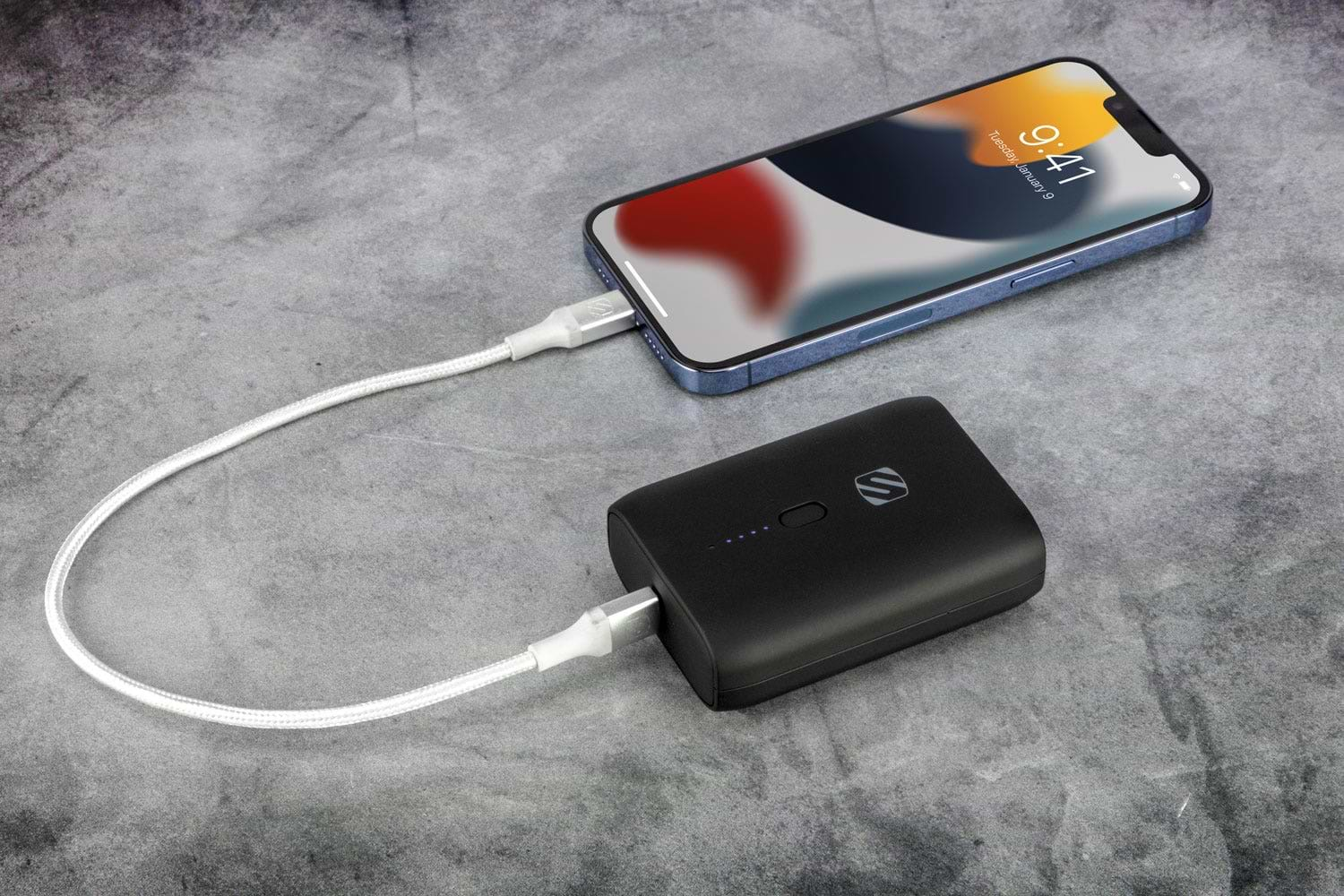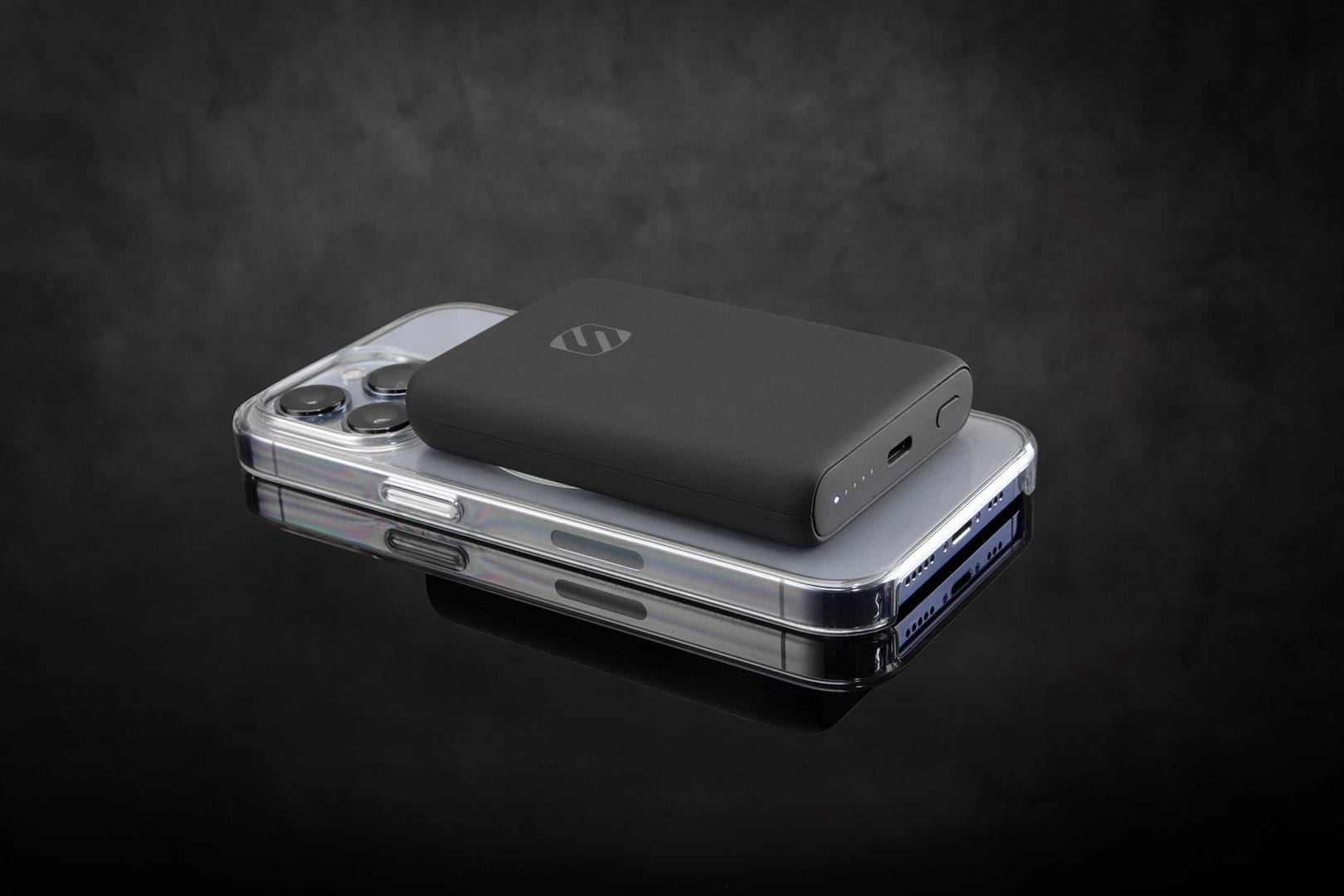Enhancing iPhone Charging in Airplane Mode

In today's fast-paced world, our smartphones have become an essential part of our lives. Whether it's for work or leisure, we rely on these devices to stay connected and keep us entertained. However, one common frustration many iPhone users face is the limited battery life, especially when traveling or in areas with weak network signals.
But fear not, because there is a simple solution to help you make the most of your iPhone's charging capabilities even in challenging scenarios: airplane mode.
Understanding Airplane Mode and Battery Consumption
The Concept of Airplane Mode
Before we delve into the techniques to enhance iPhone charging in airplane mode, let's understand the concept of airplane mode. When you activate this mode on your iPhone, it disables all wireless communication features, such as cellular, Wi-Fi, and Bluetooth. This is required during flights to comply with regulations and avoid interference with aircraft systems.
Now, let's take a closer look at how airplane mode affects your iPhone's battery life and why it can be a useful feature to conserve power.
How Airplane Mode Affects Battery Life
When your iPhone is in airplane mode, it stops searching for network signals and reduces power consumption significantly. This means that your iPhone can focus its resources solely on charging, resulting in faster charging times even with limited power sources.
But what exactly happens when your iPhone is not constantly searching for a network signal? Well, when your device is in airplane mode, it no longer needs to maintain a constant connection with cell towers or Wi-Fi networks. This means that it can conserve battery power that would have otherwise been used for searching and maintaining these connections.
Additionally, when your iPhone is in airplane mode, it also disables background app refresh and push notifications. These features, although convenient, can consume a significant amount of battery power as they constantly keep your apps updated and notify you of new information. By disabling these features in airplane mode, your iPhone can further conserve battery life.
Techniques to Boost iPhone Charging in Airplane Mode
Optimizing iPhone Settings for Faster Charging
To maximize iPhone charging in airplane mode, you can tweak a few settings to ensure your device charges efficiently. One of the most effective settings to adjust is the brightness level. Lowering the brightness can significantly reduce power consumption and help your iPhone charge faster. Additionally, disabling unnecessary background app refresh, push email, and location services can also contribute to faster charging times.
But did you know that there are other settings you can optimize to further boost your iPhone's charging speed? For instance, enabling Low Power Mode can limit background activity and save power, allowing your device to charge at a quicker rate. Another helpful tip is to turn off Wi-Fi and Bluetooth when you're not using them, as these features consume energy even in airplane mode.
Using Certified Chargers and Cables
Using certified chargers and cables is vital to ensure the safety and optimal charging performance of your iPhone. Investing in high-quality chargers and cables reduces the risk of damage to your device's battery and ensures faster, more efficient charging. Cheap or counterfeit chargers might seem tempting, but they often deliver subpar performance and can potentially damage your iPhone's battery.
Furthermore, it's worth mentioning that not all chargers and cables are created equal. Some chargers may provide a higher wattage output, resulting in faster charging times. Look for chargers that are specifically designed for fast charging or have a higher wattage rating. Similarly, using a cable that supports fast charging, such as a Lightning to USB-C cable, can significantly speed up the charging process.
The Science Behind iPhone Charging
The Role of Lithium-Ion Batteries
Understanding the science behind iPhone charging can help us make informed decisions to optimize charging. iPhones utilize lithium-ion batteries, which are lightweight and can hold a significant amount of charge. These batteries have a limited number of charge cycles and can degrade over time. By following best practices and avoiding extreme temperatures, we can maintain the health and performance of our iPhone batteries for longer.
The Impact of Temperature on Charging Speed
The temperature plays a crucial role in iPhone charging speed. Extreme temperatures, whether excessively hot or cold, can negatively impact the charging process. It is recommended to charge your iPhone in a moderate temperature environment to achieve optimum charging speed and protect your battery's health.
Let's delve deeper into the fascinating world of lithium-ion batteries. These batteries are composed of multiple layers, each serving a specific purpose to ensure efficient energy storage and release. At the heart of the battery lies the anode and cathode, which are separated by a thin layer known as the electrolyte.
When you plug in your iPhone to charge, a chemical reaction takes place within the battery. The lithium ions, located in the anode, start moving towards the cathode through the electrolyte. This movement of ions creates a flow of electrons, generating the electrical current that charges your iPhone.
However, this process is not without its limitations. Over time, the repeated movement of lithium ions can cause the battery's capacity to decrease, leading to shorter battery life. This is why it is crucial to be mindful of the number of charge cycles your iPhone battery goes through and take steps to optimize its lifespan.
Aside from the number of charge cycles, temperature also plays a significant role in the overall health of your battery. When exposed to extreme heat, the chemical reactions within the battery can accelerate, causing the battery to degrade faster. On the other hand, extreme cold temperatures can slow down the movement of lithium ions, resulting in slower charging speeds.
So, what can you do to ensure your iPhone battery stays in top shape? Firstly, avoid exposing your device to extreme temperatures. Keep it away from direct sunlight, as prolonged exposure to heat can have detrimental effects on the battery's longevity. Additionally, refrain from charging your iPhone in freezing temperatures, as this can hinder the charging process and potentially damage the battery.
Furthermore, it is recommended to charge your iPhone in a moderate temperature environment, ideally between 20°C to 25°C (68°F to 77°F). This temperature range allows for optimal charging speed and helps maintain the overall health of your battery.
By understanding the intricate science behind iPhone charging and implementing these best practices, you can ensure that your iPhone battery remains in peak condition for a longer period. So, the next time you plug in your device, take a moment to appreciate the complex interplay of chemical reactions and temperature regulation that goes into keeping your iPhone powered up and ready for use.


Common Myths About iPhone Charging in Airplane Mode
Debunking Misconceptions
There are several myths surrounding iPhone charging in airplane mode that need to be debunked. One common misconception is that charging your iPhone in airplane mode damages the battery. In reality, charging in airplane mode can be beneficial as it reduces power consumption and allows your device to charge more efficiently. When your iPhone is in airplane mode, it disables various wireless features like Wi-Fi, Bluetooth, and cellular data, which are known to consume a significant amount of power. By eliminating these power-consuming processes, your iPhone can focus solely on charging, resulting in a faster and more efficient charging experience.
Another myth is that leaving your iPhone plugged in overnight damages the battery. Fortunately, iPhones are equipped with advanced charging technologies that prevent overcharging and automatically stop charging when the battery is full. Once your iPhone reaches 100% charge, it switches to a trickle charge mode, where it provides a small amount of power to keep the battery at its maximum capacity without causing any harm. This intelligent charging system ensures that your iPhone's battery remains healthy and extends its overall lifespan.
Facts vs Fiction
It's essential to separate facts from fiction when it comes to iPhone charging. Charging your iPhone in airplane mode doesn't magically make it charge faster than the maximum charging capacity of the device. The charging speed is primarily determined by the power output of the charger and the charging capabilities of your iPhone. However, by eliminating unnecessary power-consuming processes, airplane mode can help your iPhone charge more efficiently. So, while it may not make your iPhone charge at lightning speed, it can certainly optimize the charging process.
Additionally, leaving your iPhone plugged in after it reaches 100% won't significantly degrade the battery's health. The software and hardware safeguards in place ensure that your battery is protected from overcharging. Once your iPhone reaches full charge, it intelligently manages the power flow, preventing any potential damage to the battery. So, feel free to leave your iPhone plugged in overnight or for extended periods without worrying about harming the battery's health.
Maintaining iPhone Battery Health
Best Practices for Long-Term Battery Health
Maintaining the health of your iPhone's battery is crucial for long-term longevity. Some best practices to adopt include keeping your iPhone software up to date, avoiding exposing your device to extreme temperatures, and occasionally calibrating your battery to ensure accurate power readings. Regularly monitoring and optimizing your iPhone's battery health will help you extend its lifespan and maintain its performance over time.
But what exactly happens when you update your iPhone software? Well, when you update your software, you not only gain access to new features and bug fixes, but you also benefit from battery optimizations. Apple continuously works on improving the efficiency of its software, which directly impacts your iPhone's battery life. So, by keeping your software up to date, you are not only ensuring the security and functionality of your device but also enhancing its battery performance.
Another factor that can significantly affect your iPhone's battery health is the temperature it is exposed to. Extreme temperatures, whether it's scorching hot or freezing cold, can cause irreversible damage to your battery. High temperatures can accelerate the chemical reactions inside the battery, leading to a faster deterioration of its capacity. On the other hand, extremely cold temperatures can slow down the chemical reactions, reducing the battery's overall performance. Therefore, it's important to avoid leaving your iPhone in direct sunlight or freezing conditions for extended periods.
When to Replace Your iPhone Battery
While following the best practices mentioned above can significantly prolong your iPhone's battery life, there may come a time when replacing the battery becomes necessary. If you notice a significant decline in your iPhone's battery performance, such as decreased battery life or unexpected shutdowns, it may be time to consider replacing the battery. Apple provides battery replacement services, ensuring that you can continue to enjoy your iPhone's full potential.
When you decide to replace your iPhone battery, it's important to choose a genuine Apple battery or have it replaced by an authorized service provider. Using non-genuine batteries can not only affect the performance of your device but also pose safety risks. Genuine Apple batteries are designed to meet the highest quality standards and undergo rigorous testing to ensure optimal performance and safety. So, when it's time for a battery replacement, make sure to choose the right option to keep your iPhone running smoothly.
Conclusion
In conclusion, enhancing iPhone charging in airplane mode can be a game-changer when you're in situations with limited charging options. By understanding the concept of airplane mode, optimizing iPhone settings, and using certified chargers and cables, you can significantly speed up the charging process. Combining these techniques with a basic understanding of the science behind iPhone charging and debunking common myths will help you make informed decisions and maintain your iPhone's battery health in the long run. Remember to follow best practices and have your battery replaced when necessary to ensure your iPhone remains a reliable companion throughout your daily adventures.